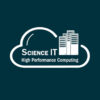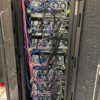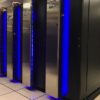Linux Service Level Agreement
-
Background
This document describes the IT Division support model for Linux based servers and desktops. It is intended to outline the expectations and the limitations of this service. -
Introduction
-
Parties Involved
-
IT Division HPC Services Group
-
Customer (owner or principal contact for the system)
-
-
Purpose – This Service Level Agreement (SLA) is to specify the services and commitments of the Service Provider as well as the expectations and obligations of the Customer.
-
-
Responsibilities and Metrics of Service Provider
-
The Service Provider agrees it will provide:
-
Basic Red Hat Enterprise Linux, CentOS, Scientific Linux, Debian, or Ubuntu installation
-
Operating system upgrades
-
Operating system and patch updates as determined by HPCS and/or CPP (Cyber Security Team). Related security and software updates for applications such as web content managers, databases, etc.. are the responsibility of the customer.
-
Local installation of software packages
-
License manager configuration and maintenance
-
Access to pre-built software on the HPCS Software Farm server using Modules Environment (SL6, RHEL6, and CentOS 6 only)
-
Security assessment and configuration
-
Security incident response
-
Assistance with coordinating vendor hardware support
-
System crash recovery
-
Configuration and troubleshooting of network services such as NFS, NIS, SSH
-
User account management
-
-
Hours of Operation
-
Business Hours: Monday through Friday 8am-6pm PST
-
Off-hours and weekends: Best effort. On-call support can occasionally be arranged for special events.
-
-
-
Responsibilities of the Customer
-
The customer agrees it will:
-
Select a POC that can be the interface between the end-users of the system and the Service Provider.
- Application support will be provided on Time & Materials with the rate at $140/hr.
-
Coordinate with the Service Provider on any major configuration changes (i.e. network installation, changes in topology, relocations, etc…)
-
Customer shall maintain site conditions within recommended environment range of all systems, devices, and media covered.
-
Provide feedback to improve the service.
-
Develop end-user contingency operations plans and capabilities.
-
Provide the Service Provider with access to equipment both electronically (passwords) and physically (cardkey access, room keys) as needed to provide service.
Provide authorization of Service Provider activities (adding new users, system upgrades, reboots, etc…)
Customer maintains final authority over the system(s) covered under this agreement and will maintain awareness of their responsibilities concerning the operation of system(s) under Laboratory RPM policy. This includes computing security and backups.
-
-
To submit a request for help, the Customer will:
-
Send email to hpcshelp@lbl.gov or Contact the IT Division Help Desk x4357 to submit a request for help.
-
Include relevant contact info. (i.e. name, location, system hostname)
-
Provide a description of the problem, urgency, and potential mission impact.
-
Be available to provide the Service Provider with additional information
-
-
-
General Maintenance Responsibilities
-
The following areas of concern need to be resolved before a Service Level Agreement can take effect.
-
Verification and setup of customer system(s) of both software and hardware.
-
Electronic and physical access to systems
-
Customer will be responsible for all expenses incurred for all hardware and peripheral maintenance.
-
Customer will be responsible for all expenses incurred for any application software maintenance and licenses installed on the system(s).
-
Customer will be responsible for management and cybersecurity for any database, web applications, and web content managers installed onto the system. Applications such as these can have dependencies on the Operating System; in these case, the Service Provider will coordinate Operating System updates in conjunction with the Customer. It is the responsibility of the Customer
-
Customer with root access will void all service level guarantees if their actions are the direct cause to a system failure or security breach.
-
-
-
Attachments
-
Definitions and Terminology
-
Server – system intended for multi-user use. Examples include shell access, file sharing services, storage, web and database hosting.
-
Desktop – Intended for single or up to three users. No external services (e.g. web, file sharing)
-
-
List of supported hardware and software
-
Operating System Software
-
Red Hat Enterprise Linux, CentOS, Scientific Linux, Debian or Ubuntu.
-
-
Hardware
-
Intel or AMD based x86_64 processor(s)
-
-
-
- Exclusions
- The HPCS SLA only provides for support directly related to the system. Additional support for non-standard OS or other aspects of the user computing environment are available on a Time and Materials (T&M) basis.
- No direct support for application source debugging/engineering
- Customers are responsible for the ongoing operation, cybersecurity, and recovery of web applications, web content managers, databases, and database-backed applications.
- Reinstallation of the system to a different or earlier OS release is not covered by the SLA and will be done on a Time and Materials basis at the current rate.
- HPCS does not perform hardware repair. Customers are responsible for purchasing hardware warranty and ongoing support from the vendor for critical hardware.
- Backups are the responsibility of the Customer and can be provided by IT Division Backup Group at additional cost.
- HPCS cannot assume responsibility for the operation and verification of any home-grown or Customer-owned backup solution.
- Service and Fees
- Recharges
- Server rate: $300/mo.
- Desktop and Virtual Machine rate: $150/mo.
- Time & Materials rate: $140/hr.
- Recharges are done in arrears by the 19th of the month.
- Recharges



